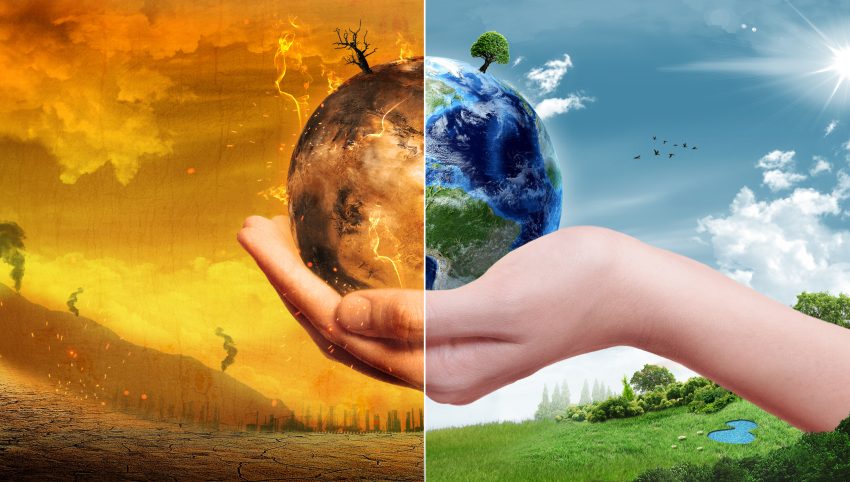As the calendar flips to late August 2025, much of the United States is experiencing an unseasonably cool end to summer, with temperatures plunging far below normal and evoking the crisp feel of early fall. From the Midwest to the Northeast, weather patterns are delivering a dramatic cooldown, complete with potential frost warnings and record-breaking lows. This refreshing chill stands in stark contrast to the relentless “climate crisis” rhetoric that dominates headlines, raising questions about the evolution of climate terminology and offering a potential boon to farmers gearing up for harvest season.
The Cool Snap Gripping the Nation
Summer 2025 is bowing out with a bang, or rather, a shiver. A powerful cold air outbreak originating from the Arctic has swept across the U.S. and Canada, bringing temperatures 15 to 25 degrees below average for late August. Maps from the National Weather Service show an “Arctic blast” affecting over a dozen states, with timelapses illustrating the rapid plunge in temperatures across the northern Plains, Midwest, and into the South. In places like Minneapolis, highs have struggled to reach the 70s, while northern Texas and Arkansas could see readings 30 degrees below normal by mid-week.
This isn’t just a fleeting front; forecasts indicate the cooler-than-normal weather will persist through the end of the month, effectively ending meteorological summer on a frosty note. Videos and reports from meteorologists highlight “insane cold blasts” and “rare August cold snaps” shattering records, with some areas dipping into the 40s overnight—conditions more typical of September or October. Michigan residents are already lamenting, “What happened to summer?” as fall-like patterns dominate the upper air. Even in the Northeast, cities are waking up to crisp mornings, with the cooldown extending into Labor Day weekend but warming slightly then.
This widespread chill follows a summer that, while warm in parts, has seen cooler starts and now a definitive cold finish, defying expectations of perpetual heatwaves.
Clashing with the “Climate Crisis” Narrative
For years, we’ve been bombarded with dire warnings of a planet on fire, with every heatwave or storm attributed to human-induced catastrophe. Yet here we are, shivering through August, which begs the question: Where’s the crisis? This cool spell directly undermines the alarmist portrayal of unending global warming, highlighting the natural variability of weather that doesn’t fit neatly into doomsday scenarios.
Skeptics argue that such events expose the fragility of the narrative. If the climate is in perpetual “crisis,” how do we explain record-breaking cold in the height of summer? It’s a reminder that weather extremes, hot or cold, have always occurred, long before industrial emissions became the scapegoat. The current patterns, driven by a dynamic jet stream and Arctic air intrusions, are part of Earth’s cyclical systems, not harbingers of apocalypse.
The Shift from “Global Warming” to “Climate Change”: A Strategic Rebrand?
The terminology we use matters, and the pivot from “global warming” to “climate change” in public discourse wasn’t accidental. “Global warming” specifically refers to the rise in average global temperatures due to greenhouse gases. However, as evidence mounted of regional cooling, variable weather patterns, and periods without uniform warming, the broader term “climate change” gained traction. This encompasses not just heat but shifts in precipitation, storms, and yes, even cold snaps.
Critics contend this rebranding was a tactical move to create a catch-all phrase that attributes any weather anomaly (drought, flood, heat, or cold) to human activity. As one analysis notes, it allows advocates to link events like this August chill to “climate disruption,” even if it contradicts warming predictions. The evolution began in the early 2000s, with “climate change” appearing more in scientific papers to reflect broader impacts beyond temperature alone. But in a politically charged arena, it serves as a flexible tool for fear-mongering, ensuring no weather event goes unblamed on humanity.
This isn’t to deny long-term trends but to highlight how language shapes perception. When cooling occurs, it’s dismissed as “weather,” while heat is “climate.” This is a double standard that sustains the narrative.
What This Means for Farmers Heading into Harvest
For America’s farmers, this cool end to summer could be a welcome gift as harvest season ramps up. Cooler temperatures slow crop maturation, allowing for better grain fill and potentially higher yields in staples like corn and soybeans. The largely dry conditions following the front are ideal for fieldwork, reducing the risk of muddied fields or delayed combines.
In the Midwest, where much of the nation’s corn and soy are grown, the cooldown comes after a season of adequate moisture without extreme heat stress. This could mitigate issues like heat-induced kernel abortion, leading to healthier crops.
Potential downsides? Early frost risks in northern areas could nip late-planted fields, though forecasts suggest the cold won’t linger into damaging territory for most. Overall, experts see this as beneficial, with lower evapotranspiration rates easing drought concerns in vulnerable spots.
Ripple Effects on Crop Prices
If the cool weather translates to robust harvests, expect downward pressure on crop prices this fall. Good growing conditions have already been weighing on futures, with corn and soy prices potentially dipping as supplies swell. USDA baselines project corn at around $3.90 per bushel for new crop, down from old-crop highs, assuming favorable weather boosts yields.
Soybeans could follow suit, falling to $10 per bushel if the cooldown enhances output. Broader climate impacts, including neutral El Niño phases, suggest mixed but generally stable outlooks, with no major shortages looming.
Wrapping Up: Nature’s Reminder of Resilience
This cool close to summer 2025 serves as a potent reminder that weather is variable, not a one-way street to catastrophe. It challenges the alarmist lens through which every breeze is viewed, exposes the adaptability of terminology like “climate change,” and offers practical benefits to farmers and markets alike. As we head into fall, let’s appreciate the chill; not as a crisis, but as nature doing what it always has – surprising us.


